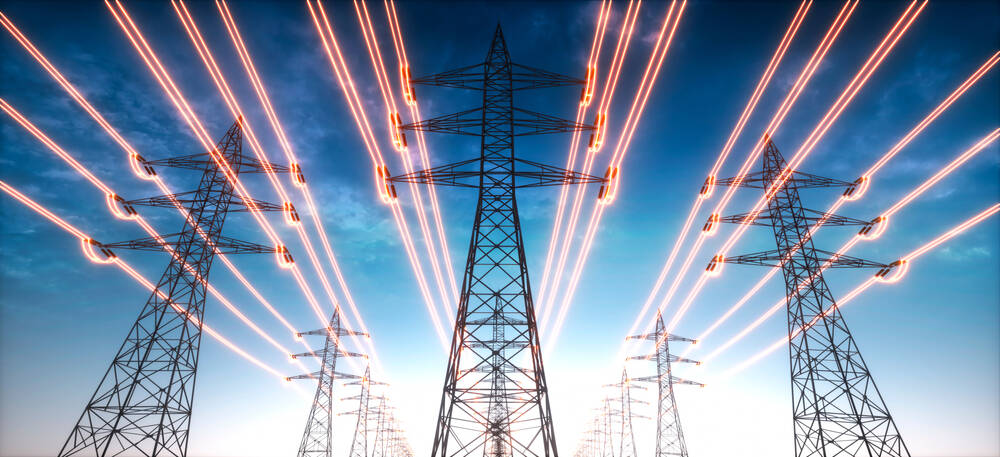Power Grid Worries Force Amazon To Run Oregon Datacenters Using Fuel Cells

Unable to get the power it needs to feed its growing datacenter footprint, Amazon plans to transition some of its Oregon datacenters over to natural gas fuel cells.
First reported by local media, Amazon's initial plan would involve installing just shy of 75 megawatts of fuel cell capacity across three datacenters with the option to expand that to four additional sites in the future.
Fuel cells extract electricity from a fuel like natural gas or hydrogen without the need for combustion. With hydrogen, the only byproducts of this reaction are electricity and water vapor, but with natural gas, CO2 — a potent greenhouse gas — is still produced.
The ability to produce power without combustion has made hydrogen fuel cells a popular source of power in spacecraft and other advanced power-tech systems but more recently datacenters have adopted this tech as an alternative to diesel backup generators in the event of an outage.
For Amazon, these natural gas fuel cells will be used as the primary energy supply, delivering 24.3 megawatts of power to each of the three datacenter sites.
"We are investing in fuel cells as a way to power a small number of our operations in Oregon," an Amazon spokesperson told The Register in an email. "We continually innovate to minimize our impact on our neighbors, local resources, and the environment and this technology provides a pathway for less carbon intensive solutions in the region."
An infrastructure problem
Continuing to use fossil fuels to power its datacenters is at odds with Amazon's stated sustainability goals — which include transitioning facilities to 100 percent renewable energy by 2025. However, sources familiar with the matter tell The Register that Amazon's decision to use natural gas fuel cells was made in part due to challenges associated with power transmission infrastructure in the region.
Oregon Live notes that the e-tail giant has had problems with landowners, who have objected to having high-voltage transmission lines cross their properties.
Fuel cells provide Amazon a way to circumvent these headaches by generating the power onsite. However, regulators are concerned that the decision could actually increase Amazon's carbon footprint in the region as the power supplied by local utilities includes a mix of hydroelectric power. In documents filed with the state, it's estimated the fuel cells would generate 250,000 metric tons of carbon dioxide annually.
- Draft climate law threatens fines for datacenters that don't cut their carbon count
- Amazon's carbon footprint spread 18% in 2021
- Amazon adds 2.7 gigawatts of renewable energy to its operations
- Massive solar project in Tennessee is all about Google
Of course, Amazon clearly doesn't have a problem growing its greenhouse gas emissions if it also means growing its business. In 2021, Amazon said its total carbon footprint increased by 18 percent blaming its continual growth, especially with regard to its cloud business, for the increase in emissions.
A cleaner future?
While Amazon plans to use natural gas to run the fuel cells, there's technically nothing stopping them from using hydrogen or bio-gasses, like methane harvested from livestock operations.
Using hydrogen fuel cells to run datacenters isn't a new concept, but it's the expensive and often carbon intensive processes required to produce it are troubling.
While Amazon hasn't said if or when it might transition to more sustainable fuels, the company is a member of the Pacific Northwest Hydrogen Association. We're told that should a steady supply of H2 become available, the fuel cells used by the facilities could be transitioned over to use a 50/50 mix of hydrogen and natural gas or upgraded to run entirely on hydrogen gas.
And that's not the only option at Amazon's disposal. The company continues to pour cash into renewable energy projects. Last September, the company said it would add 2.7 gigawatts of clean energy capacity to its global operations.
Amazon's rivals in the cloud arena have taken on similar projects to further reduce their greenhouse gas emissions ahead of sustainability deadlines.
Microsoft last month said it would supplement its operations with 2.5 gigawatts of solar panels under a power purchase agreement with South Korea's Hanwha Qcells. Google is also investing heavily in solar power generation, announcing more than a gigawatt of capacity in Tennessee and Texas last year. ®
From Chip War To Cloud War: The Next Frontier In Global Tech Competition
The global chip war, characterized by intense competition among nations and corporations for supremacy in semiconductor ... Read more
The High Stakes Of Tech Regulation: Security Risks And Market Dynamics
The influence of tech giants in the global economy continues to grow, raising crucial questions about how to balance sec... Read more
The Tyranny Of Instagram Interiors: Why It's Time To Break Free From Algorithm-Driven Aesthetics
Instagram has become a dominant force in shaping interior design trends, offering a seemingly endless stream of inspirat... Read more
The Data Crunch In AI: Strategies For Sustainability
Exploring solutions to the imminent exhaustion of internet data for AI training.As the artificial intelligence (AI) indu... Read more
Google Abandons Four-Year Effort To Remove Cookies From Chrome Browser
After four years of dedicated effort, Google has decided to abandon its plan to remove third-party cookies from its Chro... Read more
LinkedIn Embraces AI And Gamification To Drive User Engagement And Revenue
In an effort to tackle slowing revenue growth and enhance user engagement, LinkedIn is turning to artificial intelligenc... Read more

